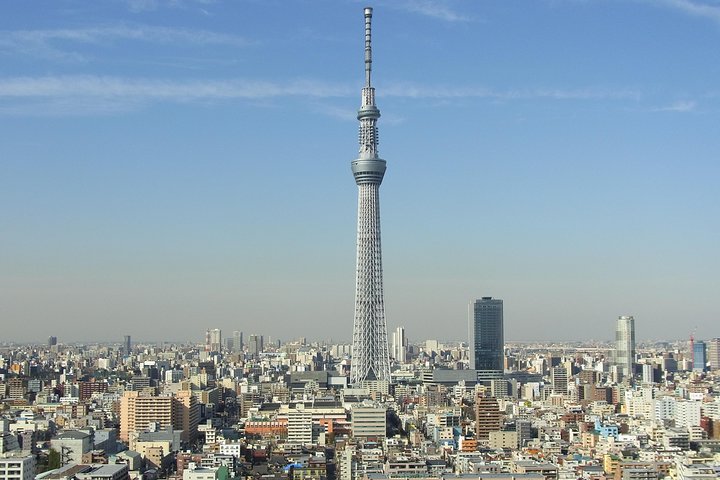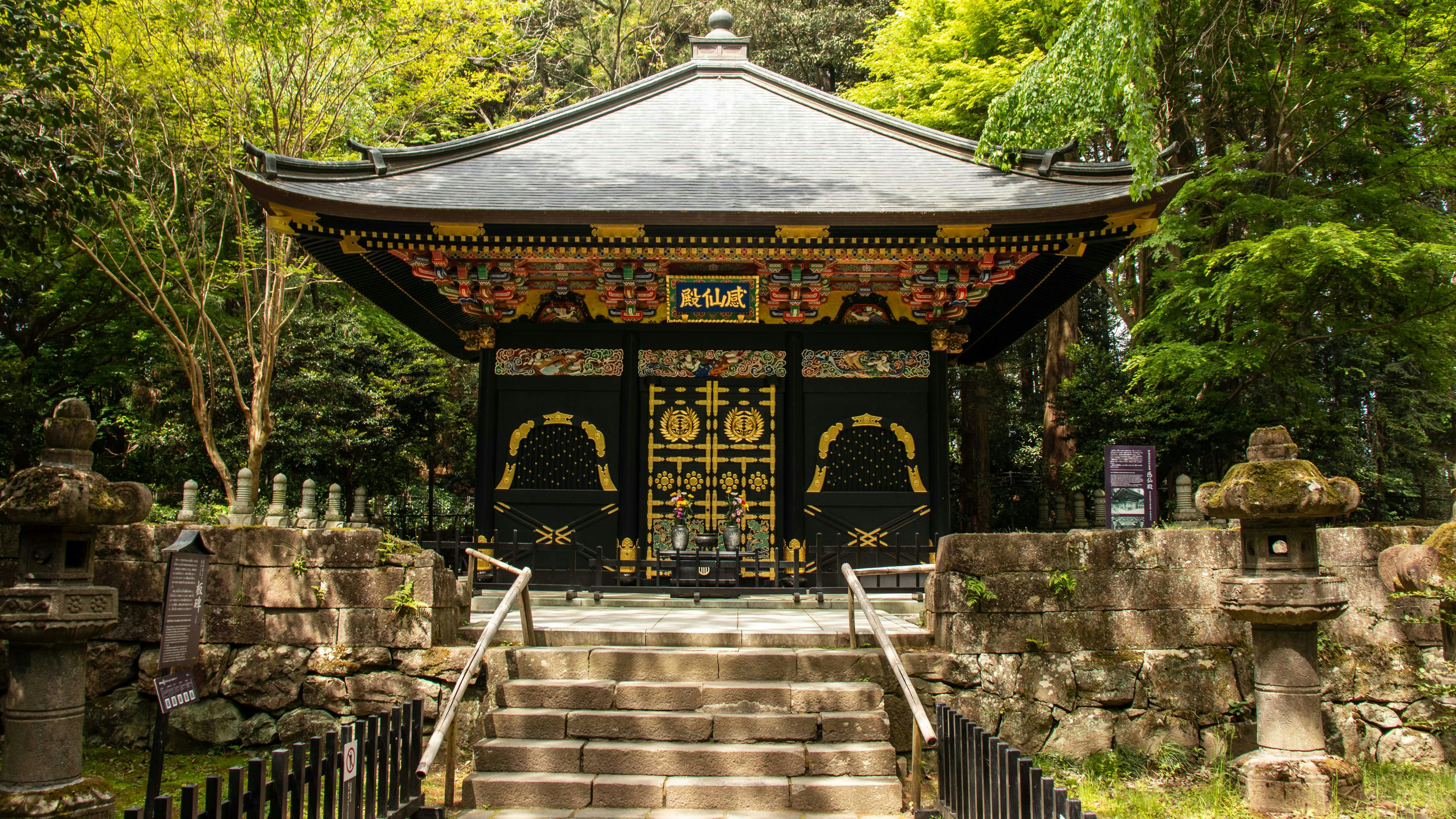14 Days in Nikkō & North of Tokyo: Shrines, Waterfalls, and Onsen Adventure
Nikkō has been a place of awe since the 17th century, when Tokugawa Ieyasu’s mausoleum blossomed into a forest of gold-leaf carvings and sacred cedar. Today this compact mountain city is a UNESCO World Heritage site where ornate shrines meet rushing gorges and waterfall mist. The famous phrase “Never say ‘kekkō’ (magnificent) until you’ve seen Nikkō” still rings true.
Just two hours north of Tokyo, Nikkō unfolds into Okunikko’s volcanic plateau: Lake Chuzenji’s alpine blue, Kegon Falls thundering 97 meters, and the boardwalks of Senjogahara Marsh where dragonflies skim the reeds. Hot springs steam year-round in Kinugawa Onsen, and summer brings whitewater canyoning while fall ignites the Irohazaka hairpins in maple fire.
Practical notes: Trains from Tokyo make Nikkō an easy, affordable escape; buses link the lake and trailheads. Try local yuba (tofu skin), handmade soba, and riverside onsen. Bring layers—mountain weather changes quickly—and a Suica/PASMO for transit. For value, consider the Tobu “All NIKKO Pass” for unlimited local buses.
Tokyo (Gateway)
Days 1–3: Arrival, Foodie Forays, and City Thrills
Start in Tokyo to beat jet lag, sample standout street eats, and lock in context before the mountains. Base in Asakusa or Ueno for easy access to the Tobu Limited Express to Nikkō.
- Getting there: Search international flights on Kiwi.com or Trip.com (flights). From the airport, ride into central Tokyo, then position near Asakusa Station for the direct Tobu train to Nikkō.
- Why Tokyo first: Adjust to the time zone, eat brilliantly, and take a curated city overview before your nature-forward week.
Suggested tours (adventurous and value-conscious):
-
1-Day Tokyo Bus Tour — Hit Meiji Shrine, Asakusa, Tokyo Skytree and more with a guide, ideal for first-timers.

1-Day Tokyo Bus Tour on Viator -
Tokyo Tsukiji Fish Market Food and Culture Walking Tour — Taste seasonal seafood and learn Japan’s culinary rhythms.

Tokyo Tsukiji Fish Market Food and Culture Walking Tour on Viator -
Official Street Go-Kart in Shibuya — Drive the city in character costumes, crossing the famous scramble for pure adrenaline.

Official Street Go-Kart in Shibuya on Viator
Coffee & breakfast: Suke6 Diner (Asakusa) for sourdough toast and shakshuka; Onibus Coffee (Naka-Meguro, also outlets) for single-origin pours.
Lunch ideas: Daikokuya Tempura (Asakusa; iconic tendon since 1887); Kikanbo (Kanda; fiery miso ramen with numbing sansho).
Dinner: Sometaro (Asakusa; grill-your-own okonomiyaki in a creaky wooden house); Uogashi Nihon-Ichi (standing sushi, fast and fresh, multiple locations).
Stay in Tokyo: Browse mid-range hotels near Asakusa/Ueno on Hotels.com or apartment-style stays on VRBO.
Tokyo → Nikkō (morning of Day 4): Take the Tobu Limited Express SPACIA/X from Asakusa to Tobu-Nikkō (~1h50; about ¥2,800–¥3,500 one-way). Reserve via Trip.com (trains). JR alternative: Tokyo/Ueno → Utsunomiya (Shinkansen) → Nikkō (~1h40–2h; pricier unless you hold a JR Pass).
Nikkō Town & World Heritage Shrines
Days 4–8: Toshogu Brilliance, Gorge Walks, and Edo-Era Legends
Nikkō’s sacred heart dazzles: Toshogu Shrine’s riot of carvings, the famous Three Wise Monkeys, and Ieyasu’s mausoleum deep in cedar shade. Futarasan Jinja and Rinnō-ji complete the triad of UNESCO gems, while the vermilion Shinkyo Bridge frames your first postcard.
- Top sights: Toshogu Shrine (plan 2–3 hours); Rinnō-ji Sanbutsudō and Treasure House; Futarasan Jinja; Tamozawa Imperial Villa (a serene stroll through Meiji-period architecture); Shinkyo Bridge; Kanmangafuchi Abyss and its 70+ “Bake Jizo” stone guardians along the Daiya River.
- Local walks: The Kanmangafuchi riverside path (easy, 30–45 min). For sunset, circle back to Shinkyo; evening light is magical for photos.
- Tickets & time-savers: Arrive right at opening to beat tour groups. If you’ll ride multiple buses to Okunikko later, check the value of the Tobu “All NIKKO Pass.”
Coffee & sweets: Nikko Coffee Goyouteidori (Taisho-era house, hand-drip and cheesecake); Kanaya Hotel Bakery (classic curry bread, raisin loaves for breakfast on the go).
Lunch: Hippari Dako (near Tobu-Nikkō; skewers, udon, traveler graffiti on the walls); Soba Yamaguchiya (handmade soba with mountain vegetables).
Dinner: Gyoshintei (temple-style shōjin ryōri emphasizing local yuba); Kanaya Hotel Dining Room (old-school yoshoku—try the beef stew or trout meunière).
Hidden gems: The stone-paved Cedar Avenue (Cryptomeria-lined remnant of Japan’s longest tree-lined road); the small but fascinating Shōyō-en Garden beside Rinnō-ji.
Where to stay (Nikkō town): Compare classic hotels and ryokan on Hotels.com or find a budget-friendly apartment on VRBO. Mid-range favorites include historic-style stays near Shinkyo and practical picks by the station.
Lake Chuzenji & Okunikko
Days 9–11: Kegon Falls, Senjogahara Marsh, and High-Altitude Trails
Climb the 48 hairpins of Irohazaka to the alpine basin of Okunikko. Lake Chuzenji reflects Mt. Nantai, and Kegon Falls roars through the cliff face just a short walk from the bus terminal.
- Waterfall trio: Kegon Falls (take the elevator down for the lower deck); Ryūzu Falls (tea house above the cascades); Yudaki Falls (start/end point for marsh walks).
- Hikes: Senjogahara Boardwalk (6–7 km; 2–3 hours; mostly flat, superb in autumn). Seasonal summit of Mt. Nantai (strenuous 8–9 hours, May–Oct; start at Futarasan’s lakeside shrine, bring cash for the trailhead fee and start early).
- Views: Akechidaira Ropeway for a sweeping panorama of Lake Chuzenji and Kegon Falls—ideal on clear mornings.
- Seasonal adventure: Kayaking on Lake Chuzenji in late spring–early autumn; winter snowshoeing tours operate on the marshlands when conditions allow.
Casual eats: Senjogahara Resthouse (hiker staples like curry rice and soba); Ryūzu-no-Chaya (warm mochi and tea); lakeside cafés near Chuzenji Onsen for trout dishes and light pasta.
Stay lakeside: Look for rooms with forest views on Hotels.com or VRBO. Classic properties around Chuzenji Onsen offer open-air baths with lake or forest backdrops.
Nikkō town ↔ Okunikko buses: 40–60 minutes each way depending on stop and traffic; buses can be crowded during peak leaf season—go early. Check fares and passes locally; for rail changes back to Tokyo later, see Trip.com (trains).
Kinugawa Onsen & Ryuokyo Gorge
Days 12–13: Hot Springs, Canyoning, and Edo-Time Fun
Shift to Kinugawa Onsen, a hot-spring town carved by a jade-green river. The area is famed for whitewater fun in summer and leaf-peeping in fall, with easy rail access back to Tokyo.
- Adventure picks: Guided canyoning and rafting on the Kinugawa (seasonal; half-day options fit a mid-range budget). Hike the Ryuokyo Gorge trail for layered rock strata and turquoise pools (easy-to-moderate).
- Culture & kitsch: Edo Wonderland (Edomura) for ninja shows and period streets; Tobu World Square for miniature world icons—surprisingly detailed.
- Soak time: Book a ryokan with open-air rotenburo overlooking the river for peak relaxation after hiking.
Dining: Most ryokan include kaiseki dinners; for casual bites near the station, look for homestyle ramen, local gyoza, and yakitori shops clustered along the main street.
Stay: Compare river-facing ryokan and good-value hotels on Hotels.com or browse apartments on VRBO.
Nikkō ↔ Kinugawa Onsen: Tobu trains run in ~30 minutes. For long-distance planning, use Trip.com (trains).
Optional Tokyo Finale or Mt. Fuji Day Trip
Day 14: Ride Back to Tokyo and Cap the Journey
Return to Tokyo via Tobu Limited Express (~2 hours from Kinugawa or Nikkō). If you have an extra day or a late flight, consider one last bowl of ramen or a day tour to Fuji for big-mountain vistas.
-
Tokyo: Mt. Fuji & Lake Kawaguchiko 1-Day Bus Tour — A cost-effective way to see the iconic mountain, Chureito Pagoda views, and lakeside stops.

Tokyo: Mt.Fuji & Lake Kawaguchiko 1-Day Bus Tour w/Optional Lunch on Viator
Departing flights: Search or adjust times on Kiwi.com or Trip.com (flights). If you prefer a private airport ride, prebook a transfer that fits your schedule and group size.
Block-by-Block Overview (for pacing and budget)
- Days 1–3 (Tokyo): Orientation, food tour, Skytree views, optional street go-kart. Budget eats keep costs balanced.
- Days 4–8 (Nikkō Town): Shrines, Shinkyo Bridge, Tamozawa Villa, Kanmangafuchi. Focus on cultural tickets and free river walks.
- Days 9–11 (Okunikko): Kegon Falls, Senjogahara hike, Akechidaira ropeway; optional Mt. Nantai summit (seasonal).
- Days 12–13 (Kinugawa Onsen): Canyoning/rafting (summer), Ryuokyo Gorge trail, long soaks in rotenburo.
- Day 14 (Tokyo/Departure): Ride back, final bites, optional Fuji bus tour if time allows.
Money-saving tips: Travel off-peak hours, use IC cards for buses/trains, consider a Tobu pass for Okunikko. Mix ryokan nights (with dinner/breakfast included) and value hotels/apartments to stay near the client’s 50/100 budget. Convenience stores offer excellent on-the-go breakfasts for early hikes.
Across two weeks, you’ll trace shogunate glory through cedar forests, hike marshlands where clouds skim the plateau, and soak in river-heated baths under stars. With Tokyo’s energy bookending the trip, this itinerary keeps the adventurous spirit high while staying smart on time and budget.

